
Rita Cole at a dinner at a well-heeled arts donor in GableStage’s The White Card
What Happened, What Is Happening, What May Happen
PART 3 OF 4: ATTENTION MUST BE PAID: RACISM, SEXISM, WORKING CONDITIONS
By Bill Hirschman
During the introspective interregnum, while the artists were re-evaluating their lives personal and creative, the entire community, especially its leaders, were doing the same on an industry-wide basis. Many artists contended that certain situations should no longer be tolerated and they raised their voices.
Three troubling issues graduated from complaints whispered in dressing rooms to being aired on Facebook with carefully cloaked specifics.
One was sexual improprieties—physical and verbal—in the wake of the #metoo movement in Hollywood.
The second was deleterious working conditions—considered for years as standard operating procedures that artists were expected to accept without complaint.
But the one that unnerved many theater leaders—who rarely imagined they were guilty of it—were racial issues ranging from casting to microaggressions in rehearsal.
We will look at all three.
With a few exceptions, virtually none of the abusers or the venues have been named publicly for fear of the speaker being blackballed as a troublemaker. Few interviewees would go public with their names attached to the allegations or wanted the existence of their interviews known. But “not for attribution” the allegations flowed, corroborated one another on their existence if not the specific cases.
Furthermore, changes in response on all fronts are visibly underway from bringing in intimacy coordinators for help staging sex-related scenes to aggressively beginning to diversify what can be seen on stage, backstage, in offices, on boards of directors and reaching out to bring in new audiences with titles that target the specifics of their 21st Century lives.
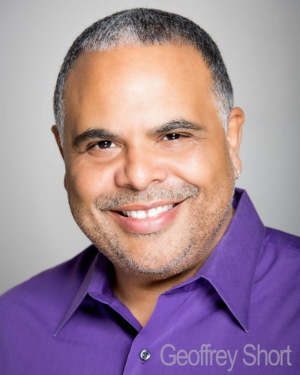
Geoffrey Short
“I think everybody’s on notice…we will not follow the same rules we’ve always followed,” said actor-director Geoffrey Short, president of the board the Pembroke Pines Theatre of the Performing Arts and secretary of the Carbonell Awards.
But as far as race, sex and conditions, a segment of artists question how broad deep and lasting these changes will be.
Veteran actress Karen Stephens observed, “It’s going to take more than a season, two seasons. It’s going to take a concerted effort and a continued effort. Sometimes people think, okay, well, I put somebody (of color) on my board. I did a season where we hired more Black actors or actors of color, and then they think, that’s enough, and then they go right back to next season to business as usual…. It’s not a one-off thing. It’s something that has to continue, and you have to build on, lay the foundation and build on that over time.”
NO PLACE TO BE SOMEBODY: RACE
After the George Floyd tragedy, long-simmering concerns detonated about unintentional and simply thoughtless racism in every facet of theater. Much of it was catalogued in a nationally-blanketed open letter/petition called “We See You White American Theatre” in June 2020, signed by hundreds of diverse theater artists.
The subsequent groundswell of baked-in outrage excoriated the art form at large over a wide range of sins: not seriously considering BIPOC artists for roles, a lack of play titles by diverse playwrights, a dearth of diversity in backstage hiring, few diverse administrators and board members, offensive comments made in rehearsal, a lackluster attempt to bring in diverse audiences and a general emotional and cultural disconnect from race in nearly every aspect.
In multi-cultural South Florida, that national groundswell encouraged local artists to say the same concerns exist as part of the fabric in their local theater. Most of the criticisms were aired far more quietly if unmistakably clearly—again, mostly anonymously. Further, many saw the extent and depth of the problem to be less egregious than in communities like Chicago, New York and elsewhere. But they insisted they were inescapably present in their backyard.
It could be microaggressions like insensitive statements in a rehearsal room. It could be most Florida theaters seemingly limiting their diversity in selecting a season to one well-worn title during Black History Month or “the obligatory Nilo Cruz play that happens every season or two,” said Short.
It was especially evident in casting predominantly white (and sometimes Latino) performers in parts that had no race connected to them, rather than hire Black actors.
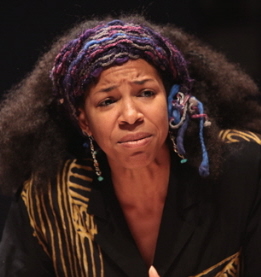
Carey Brianna Hart
Actress-director-stage manager Carey Brianna Hart, newly-elected president of the South Florida Theatre League, has always dreamed in vain of playing Blanche in A Streetcar Named Desire. Being turned away for auditions almost from the start of her career in college “actually is originally why I started doing technical work, because the parts that I wanted, the lead parts that I wanted did not go to African-Americans.”
But most leaders in South Florida theater always saw themselves as open-minded progressives, easily citing examples of play choices and casting. For instance, the late Joseph Adler at GableStage in Coral Gables regularly mounted plays with race as an issue over and over and over with roles for BIPOC performers such as White Guy on the Bus, The Royale, Ruined and Tarell Alvin McCraney’s Haitian-flavored adaptation of Shakespeare’s Antony and Cleopatra.
Actors’ Playhouse in Coral Gables—aware that the majority of Miami-Dade citizens are Latinx—has mounted plays and musicals year after year with dominant Hispanic themes and characters, ranging from the world premiere of Nilo Cruz’s The Color of Desire to the hoped-for pre-Broadway tryout of the musical Havana Music Hall. It often casts Latinx performers. But its leaders have never felt that the box office response was significant from the Hispanic community. Only last winter’s On Your Feet rooted in the Miamian Gloria Estefan’s song catalog landed as solidly as the company hoped with that audience.
Yet, the national uproar prompted many local leaders to attend online Equity-Diversity-Inclusion training sessions. For instance, the South Florida Theatre League, sponsored an Anti-Racism Theatre Strategies (ARTS) Cohort in a six-month long program for producers, led by Christina Alexander and Katie Christie.
Artistic directors and producers emerged with specific plans and commitments. Indeed, the past season, the current season and promises for next season reflect casting BIPOC artists in race-neutral roles, intentionally cross-cultural casting, significantly boosting the number of plays by BIPOC playwrights and with BIPOC casts.
Slow Burn Theatre Company in Fort Lauderdale mounted an acclaimed production of Once On This Island in February 2022 with a multi-racial cast. Artistic director Patrick Fitzwater turned over his own traditional choreographic duties to Black dancer Jerel Brown for that production. When it produced the musical Matilda last spring, the teacher Mrs. Honey was Black and title child was played by an Indian-American.
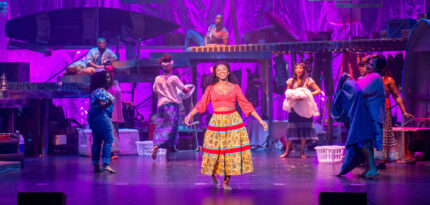
Brinie Wallace and company in Slow Burn Theatre’s Once On This Island
“And that is progress. But there’s still so much more be done,” said Patrick Fitzwater, Slow Burn Theatre Company’s artistic director and co-founder.
For Theatre Lab in Boca Raton “it has become a guiding principle in the company. I like to believe that it was already something that we were focused on…. But it’s a constant learning process, and you have to be willing to constantly reevaluate what you have been doing, mistakes you may have made in the past, what you could do better… We really can only change the world by starting in our backyard,” said Matt Stabile, artistic director.
Going forward: South Florida audiences—like those from Manhattan, New York, to Manhattan, Kansas—have seen far more race-oriented titles at mainstream theaters in the current season. A sampling: Suzan Lori-Parks’ Topdog/Underdog at Main Street Players and Palm Beach Dramaworks in the same season, Lynn Nottage’s Sweat at Main Street Players, Fade at GableStage, Ain’t Misbehavin’ at PPTOPA. At the Latin-centric Miami New Drama, the entire 2022-23 season is ethnically-rooted including a new play entitled Elian.
Further, numerous productions have been cast or are slated to be cast with BIPOC performers in race-neutral roles. When the Maltz Jupiter Theatre put out a casting call for its 2023 winter musical Sweet Charity, it specified that the lead actress had to be Latina—although race is not specified in the script.
Further, there have been some attempts by companies like Palm Beach Dramaworks to address the lack of diversity in leadership positions. This is crucial in the background of people making artistic decisions about the meat of a work.
“I think that organizations really have to look at who is running these organizations and where are the voices from people of color,” Short said. “The programming has to be developed with that diversity in mind and regardless of the challenges that may be in front of a theater, the theater has to put people in place that can help drive those projects.”

Matt Stabile
Stabile added, “Because it’s fine if you’re going to do a play by a Black playwright and bring in a Black director and have a Black cast. But if nothing about your institution reflects that production, then that’s just a group of guests in your house who, once they leave, has it changed your house?”
Still, the current change is most noticeable in casting, especially in hopes of bringing in audience members wanting to see people on stage who look like them.
The concept is built into many casting discussions these days. “Being on the other side of the table, casting is a totally different animal now,” said musical director Eric Alsford. “It comes up in conversation every show I do in terms of being more open to diverse casting, gender casting.”
One result is diversity in the people auditioning, Alsford said. “A lot of people are getting chances that (hadn’t) normally and people coming into audition that I’ve never seen before, people of color. And I said, wow, where did this person come from? I’ve never seen this person before. And they need to be in this show.”
That said, there still are obstacles. Venezuelan-born actress Gaby Tortoledo recalled turning down a part that was clearly a Native American character. Artistic Director Keith Garsson said he would love to mount a tale about Asian-American life at Boca Stage, but local casting—a priority for his company—would be a challenge.
None of this is enough for some observers like Darius J. Manuel, a Dillard High School educator, creator of the BIPOC-based youth Renegade Theatre Company and an acclaimed actor in Slow Burn Theatre’s Head Over Heels and Songs for a New World.
“I’ve learnt that words are just words are just words are just words,” Manuel said. “The pandemic happens and everybody and the places that I love scream about diversity and equity and promise that they’re going to be the ones that make Black Lives Matter and that Black people shall have a home on our stages and all this stuff. But now that we’ve come out of this pandemic, it has literally broken every inch of my heart seeing that none of the companies, and I repeat, none of the companies, even the companies that I work for… have kept up that promise.”
He wrote on Facebook later, “These Companies and Casting Personnel are back sticking ONE or TWO of us in the Ensemble and/or only letting us play those typical Black roles again…White people LOVE to not cast Black people in shows. Especially in South Florida Theatre. It’s becoming a comedy fest. Y’all are funny…. White companies just need to go ahead and admit that they are racists.”
GETTING TO KNOW YOU: CONNECTING COMMUNITY
These issues are equally evident in the last piece of the equation: building the audience, a new audience.
Company leaders know that their older white audiences addicted to Neil Simon and Jerry Herman are dying out, that 21st century audiences want stories far more complex than their parents and grandparents’ mainstream fare.
And key to all that in South Florida with its heavily multi-cultural population are efforts redoubling, tripling their previously perfunctory outreach. But it’s not just increasing targeted advertising and enlarging its already considerable in-school visits and busing diverse children to a free production.
The word being used over and over locally is “community.” It means recognizing that existing and future audiences are part of communities with specific qualities, interests and especially ethnic backgrounds. Miami New Drama’s leaders have aggressively contended that Florida theater companies have not tried at all to connect with their communities. Most of their competitors—deeply insulted—disagree angrily, but they agree they need to step up their efforts.
“One of the reasons African-Americans and any minority doesn’t go to mainstream American theaters because they don’t see their stories up there,” Carey Brianna Hart said.
Simply posting upcoming opening nights on social media isn’t enough, Short warned. “We have to cultivate a new culture of diversity…. We have to educate people of color, not just black people, anyone of color. We have to go where they are and we have to tell them what we do for them, (give them the) opportunity to tell stories, opportunities to make decisions, opportunity to have access to the arts. Provide that access to take away the mystery of it, arrange things, very simple things like transportation.”
Some directors and producers say they want to expand their race-related titles, but they wonder if the casting pool is deep enough locally. Indeed, many shows in the past season and a half that needed African-American actors especially, often went out of town to find them after open auditions and ended up hiring off videos.

Darius J. Manuel
Critics say that is a self-fulfilling prophecy. Darius J. Manuel derides claims that there isn’t enough talent locally. “I am surrounded by so many Black and brown performers who I think are phenomenal…. And I’m shocked when they are not getting cast, when the only time they’re getting cast is when you need a street urchin or you need or we’re doing a production of Once on This Island.… So a lot of the times, the only time we show up (to audition) is when you tell me we’re doing Sister Act.”
True, many superb Black actors and actresses like Ethan Henry and Makeba Pace left the area, although that is true of performers of every ethnicity. But several left because they felt they were not taken seriously in casting.
Yet other experienced BIPOC artists have created a home base here, such as Rita Cole, Karen Stephens, Keith M. Wade, Kent Chambers-Wilson, Jovon Jacobs, Elijah Word, Ron Hutchins and Hart.
And looking at the casts of shows in the past season and the one just before pre-Covid, a crop of Black 20-something actors and directors have taken their place on stage: Denzel McCausland, Roderick Randle, Darius V. Daughtry, Chasity Hart, Jamel Booth, Jean Hyppolite, Jeffery Cason Jr., Stephon Duncan, Toddra Brunson, Reynel Reynaldo, Yesenia Ozuna, Manuel and several others.
Reaching potential artists, administrators and especially patrons in the community requires a doubling down on aggressive outreach.
“Our mission for 16 years and my focus has been for 16 years to educate, entertain and inspire, but my new focus is on the final word of our mission, which is community,” said Andrew Kato, the Maltz Jupiter Theater’s producing artistic director/chief executive, who underwent EDI training. “You not only have to look at the people who are making demands of you, but also the look at the people who… are underserved in our community…. It was not intended to do damage, but I had put my focus on the gated community, not our entire community. So if we are going to be a beacon and have this beautiful shining thing here, then everyone has to feel like they play a part in it and are welcome.”
For instance, Jupiter has a Guatemalan community and Kato’s company is talking with the El Sol Neighborhood Resource Center.
“We just hosted an LGBTQ event in my own community and I got in front of people and did a heartfelt apology for failing part of our community (in) where I was putting my focus,” Kato said.
Yet it has always been difficult to get diverse audiences to regularly attend theater produced by mainstream theaters, as opposed to work at M Ensemble, the oldest Black theater in the state, or the Spanish language theaters in Miami-Dade like Theatro Avante.
“You go to where people already are and you claim them as your own,” Short said. “They are not seeing what we are putting out because we’re not where they are. And so we have to go where they are and we have to show them why would it make sense for them to invest their time, talent and energy into our organization. They’re not stupid. They don’t want to be a token right now.”
As with every lesson from this time, many question whether the current available efforts will dwindle after a season or two.
“But, hopefully, once the scales have been pulled back from someone’s eyes, you can’t unsee. So if nothing else, hopefully people have seen and can’t go backward. Now, so much of it is a long game. It’s not going to happen tomorrow,” said GableStage’s Bari Newport.
INTIMATE APPAREL: SEXUAL ISSUES ON STAGE AND OFF
Obviously, sex has been a theme in theater productions for a century, depicted in stage in everything from a chaste kiss to nude lovemaking. But that often created accompanying attitudes and problems about what was happening off-stage and in rehearsals.

Hannia Guillen and Gabriell Salgado in Miami New Drama’s Anna in the Tropics
The scope and frequency of sexual-related problems appear to be far more limited here during the past few years than elsewhere around the country, but people interviewed for this article said it existed here widely pre-Covid and it still persists to a degree in some corners. Suggestive remarks. Hands migrating to places they shouldn’t. Someone hanging around watching costume changes. The list continues.
“Five years since the #metoo movement, it should not be happening,” said Gaby Tortoledo.
She recalled an incident last year in which a “person of power continuously texting words like, ‘Hey, baby, you were great today,’ or ‘Baby, you’re doing amazing,’ to the point where even I was in rehearsal, and this person would walk in the room and insist on hugging me and having physical contact with me every time we were in the same space together.”
When she complained, the theater removed the person from a position of power, but retained them as a volunteer, she said.
But some veteran artists recalled a time when such situations were only a shade of the pressures from directors and producers for artists to spend the night after rehearsals.
“I’ve been through the circuit of being a 16-year-old performer and being on a national tour,” said Patrick Fitzwater who recently turned 50. “Growing up during the time period, looking back at some of the stuff that I’ve been through (elsewhere), I’m like, oh, my God, how inappropriate that was for somebody to do that to me…. I always think, why wasn’t I freaking out in that moment? Now I still see that cast members play fast and loose with each other, and they will say things.”
A few years ago, it was not unusual to see nudity in local productions from major companies, usually but not always dictated by the script. In recent seasons, it has been rare other than in gay comedies and for clearly artistically defensible reasons.
Some of the direct violations of privacy and propriety used to be blamed on the tight, intimate relations artists had to build to produce the on-stage illusion of relationships. Plus, legendarily transitory showmances have always existed and likely will in the future.
Additionally, “theater people are this weird amalgamation of people,” Eric Alsford said without excusing abuses. “You know, we’re just so open and our humor is so out there, and we’re touchy feely and we’re huggy and we make jokes. We’re just such open creatures.”
Indeed, a few veterans interviewed, male and female, fret that the legitimate concern has developed an artistically inhibiting paranoia.
One recalled, “We live in a world where if you say, hey, your hair looks nice today, to the wrong person, (then) your career is over. You’re screwed if that person is just a little bit crazy, way too sensitive. If your inflection was a little bit too lazy or whatever, you don’t have to touch them these days. All you have to do is open your mouth.”
But others like Tortoledo push back. “It’s things that should not be happening in any professional workplace, but especially in a theater organization where we need a vulnerability to be able to do our best work on stage. If we’re on guard all the time protecting ourselves from sexual predators, it’s not okay.”
As a result, many theater leaders are being triply careful what they say and do today, especially in rehearsals.
A longtime director said, “Even though you think you don’t allow it in your company and you work really hard to make sure it’s not there, you just have to be more aware of it every single day. I even have the point now where (when) I have an audition of five women for a role…. I make sure there’s a female, one of my assistants, one of my people in the room with me.”
To deal with the overlap between such concerns and required scenes of physical relationships, many theaters this past season have been hiring “intimacy coordinators” such as Nicole Perry and Jeni Hacker. They may be involved in planning even before rehearsals begin and they directly help choreograph the interaction of performers during rehearsals after deep conversations with actors about boundaries and fears.
Actress Diana Garle added, “I do feel that since the season restarted, I feel like everyone has a little bit more of an understanding of how pivotal … an intimacy director is to moments, to creating real honest moments on stage and having everybody feel safe. At the same time, I don’t think that there was much emphasis on that prior to the last three years. I think that boundaries became a really big thing.”
But it involves a change in thinking. Elizabeth Price, actress-director-educator and associate artistic director of New City Players, is totally supportive, but she said, “Sometimes it comes across just in comments or jokes (in rehearsal) where we’re like, ‘Remember when we used to do this? I remember when that was okay.’ And that we’ve had some good laughs, which tell me that we really have made some strides, but it’s a… kind of feeling and a laugh of like, ‘Oh, that was totally accepted five years ago or even three years ago.’ ”
Now, artists who believe they are being sexually harassed or balk at nudity or are upset at treatment from anyone including a director are encouraged to tell someone in the company, either the intimacy coordinator or someone publicly appointed to deal with complaints.
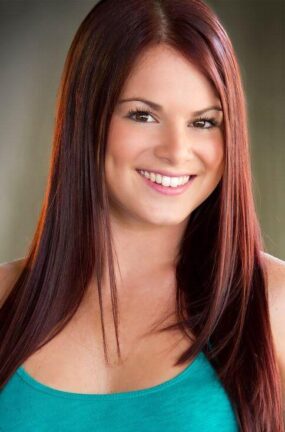
Emily Tarallo
That avenue for reporting grievances, sound designer Matt Corey said, was decades overdue. “First of all, they would put any potential bad actors on their best behavior because they know it’s not going to fly. And secondly, if there was a situation, there’s a clear path to how it gets resolved.”
“I think that that’s only gotten stronger now in terms of the theater being like a safe place for everybody,” said dancer-actress-choreographer Emily Tarallo. “I do think that things will always happen and that’s the way that it goes. But I would hope that at this point people feel comfortable and confident enough to say this is not okay, this is happening, this is what’s going on, and feel safe enough that they will be taken care of.”
ALL I WANT IS A ROOM SOMEWHERE: CONDITIONS
For a century and a half, American theater artists have been at the basement end of the economy, even with union representation. Most are too poorly paid to pursue their art full-time, even for those who work steadily. If that’s true in New York, it’s doubly true in regional theaters in South Florida.
But at the same time, because artists are always concerned that this job may be their last (even the biggest stars on Broadway feel this way) they have been vulnerable to a catalog of sins: Working long punishing hours in six-day weeks including the infamous 10 hours out of 12 for technical rehearsals; filthy and unsafe conditions in some backstages, although not as bad as they used to be; performing when they should be in a sick bed or at their mother’s funeral. Some directors’ style can be emotionally abusive in front of the entire cast. One South Florida source recalled once being told years ago to keep working when a hurricane’s arrival was imminent. The list goes on until it’s not hard for civilians to understand why freelance artists have migrated to a 9-to-5 and 40-hour-a-week job with benefits.
It should be needless to say, but obviously not all companies, their venues and their policies fit this profile or all of these bullet items.
Further, several of these concerns are being addressed by some companies after the forced intermission led to artists “reassessing their values; ideas around power dynamic were explored a lot by all of us as individuals,” said Tim Davis, producing artistic director of New City Players. “One of the things that people are experiencing is like, if I’m going to sacrifice things to be an artist… (such as) financial stability… because of our passion, I don’t want to have to deal with a bunch of bullshit and inappropriate behavior and racist behavior and abusive behavior…. I’m going to speak up and I’m going to challenge authority structures.”
For some directors, the intense marathon rehearsals simply are not necessary, just a tradition. “We did a show with a 10-foot by 12-foot puppet and flying scenery, and we never had a 10 out of12 for tech. We did five days of rehearsal and nobody was ever called for longer than eight hours,” Matt Stabile said. “It can be done.”
Actors’ Playhouse now plans only six-hour rehearsals. Some companies have increased their non-Equity pay scale to Equity levels even without any Equity cast members. Some are talking about providing counseling if needed.
As a result, “companies need to have internal structures that allow people to make complaints, where a sort of the chain of communication… is laid out to people on the front end” as New City Players has done for two years, Davis said. “People know… hey, here’s the behavior we don’t tolerate as a company. And here’s the people to talk to if those things are breached.”
On all three concerns, the pandemic has changed what local artists are willing to put up with silently. For decades, some directors and producers and choreographers were famous for being abusive in rehearsals, believing that either their genius or a performer’s laziness justified it. Less of that occurred in this region, but certainly it occurred – and still does.
One production earlier this season was cancelled when the producing company felt the director was being abusively harsh remonstrating some cast members who, according to one account, reportedly were not meeting their responsibilities. As with the sexual issues, some observers no longer excuse the kind of previously-accepted rough treatment common in the 1950s through 1970s from people like Jerome Robbins.
One actress said she hasn’t worked here in several years in part because of one director’s “straight up abusive” verbal attacks in front of other cast members.
A different actress who has worked regularly recently, Emily Tarallo said, “You shouldn’t have to work for somebody who doesn’t respect you on a personal level. We’re not just puppets easily used for audience gain, as much as it may seem that way.”
SOMEWHERE THAT’S GREEN: BRAIN DRAIN
No one interviewed specified these issues as a primary cause, but the uncomfortable truth is that it has become more difficult to find people wanting to have a career in theater. A brain drain has eaten away at the local talent pool as artists, mid-level administrators and especially craftspeople have left town, even left the business.
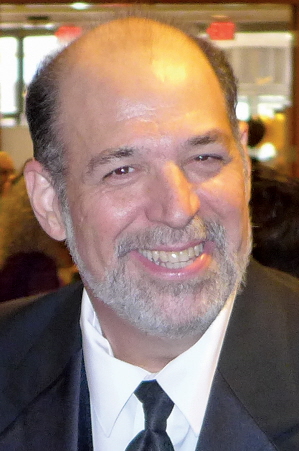
David Arisco
“The hardest thing that we’ve learned is that we’re all sharing a very small pool down here in South Florida,” said David Arisco, artistic director of Actors’ Playhouse in Coral Gables.
Certainly, there is competition for starring roles. And a new young generation of artists is rising locally. But not quite the tidal wave that there was before the pandemic when videoed audition submissions from around the country jammed director’s In Boxes. Indeed, while producers want to cast locally out of loyalty to the community (and to save on housing costs), more and more roles in the past season and the upcoming one are being filled by actors brought in from the outside.
“As much as we have a lot of talented people down here, they can only spread so far before you become in a battle that you lose people that you were thinking of hiring for roles… who are already cast next year,” Arisco said. In the past, new talent flowed to auditions from Florida International University or New World School of the Arts in Miami, “They would stay in town for a year, you would be able to use them in your children’s theater. You would use them in your ensemble, and you would be able to slowly build them up and find out the strength of the people” for later seasons.
The situation has become critical for positions out of the spotlight but which are essential to putting on a show. Employees and freelancers axed when productions ended don’t want to be abandoned again.
Office workers found more reliable jobs in more traditional enterprises and working in their pajamas at home. Performers offered to mentor others, but several simply became all-around teachers in traditional public and private educational institutions.
This need is doubly hard when the opening is for a stage manager, house manager, office accountant, fund-raising development director, lighting designer, costumer, sound technician.
But the crisis is downright crippling for companies seeking carpenters and painters to build the sets and then stage crews to build, operate and then tear down a production. Gig set carpenters found more reliable jobs in traditional construction. Dramaworks, which once could find multiple carpenters for a show, recently had to build and paint its detailed set of a funeral home crematorium for The Science of Leaving Omaha using whatever staff was willing to help.
One producer “doesn’t understand why she has to pay a scenic painter more than $7 an hour. (It’s) because they have a skill. They don’t need to paint your sets…. They can paint houses for more than that,” said Irene Adjan, veteran actress and vice-chair of the Liaison Committee now of Actors Equity Association. “Especially if there’s related industry. A lot of sound people, they’ll go work for production companies that do concerts, do events. They get paid a lot more money than sitting around at one of these local regional theaters.”
The Florida Professional Theatres Association (FPTA) sends emails every few days in which some theater in the state is seeking help. In September and this January, cooperative ads were posted online from City Theatre, GableStage, Miami New Drama and Zoetic Stage seeking applicants for an array of backstage, technical, and design positions, presumably who could shuttle between the houses.
The alternative is to hire one of the professional companies who will build and paint your set, deliver it on time as designed, but at a price that can be $50,000 for a relatively simple design. Indeed, that is where many of the former gig workers have migrated to, given its higher wages, complete benefits and full calendar of conventions, gala, Vegas shows and film work.
Worse, the pipeline of young talent in every area has irised down. Theater is just not being taught widely in schools, let alone encouraged as a way to express a creative urge, let alone chosen as a career, said leaders like Artistic Director William Hayes at Palm Beach Dramaworks. FPTA’s founder Sherron Long, music director Caryl Fantel and sound designer Matt Corey argue that the region needs to establish training programs for a new generation, both in school and outside the classroom.
“If we don’t build it from the ground up, it can’t happen,” Fantel said. “And also training needs to be available at all levels. There are a lot of programs here that are quite costly for families and a lot of families cannot pay for that kind of training. So it’s important to have training in school and out of school that is subsidized.”
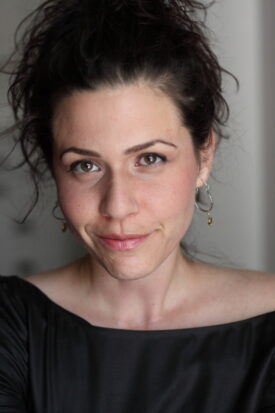
Bari Newport
An aggravating cause for the shortfall, said Bari Newport who arrived in 2021 from Maine, is that South Florida “is one of the most expensive places in the country to live…. At this point, it is impossible for an artist, and that includes crafts people.” When work dried up during the pandemic, many artists simply left the region, returning to home towns or other cities with a more workable situation.
Corey, who doubles as CEO of Insight for the Blind, said, “I can only believe that it’s just not a career right now. If I didn’t have my day job and I was hustling like I used to hustle, I still would be living well below the poverty line. There’s no way you can do it without some sort of an actual job that allows you the flexibility to do your creative stuff. So if you come into town and you just want to do audio or just want to do lighting, you’ll probably get some work pretty quickly, but it’s just not going to be something that’s going to sustain you.”
It didn’t help that the once thriving film, television and commercials industries in the state that helped support stage actors nearly dried up after the state Legislature abandoned tax incentives. Instead, more and more South Floridians have moved to cities like Atlanta or to Los Angeles to try their luck.
The upside for local performers is the openings for roles appears to be wide open. And the talent is available locally, experienced artists insist.
“I want to see my colleagues, local colleagues, getting work and I’m going to be pissed if I see somebody from New York being flown in and put up and given a car and working when I know you can find them locally,” said much-honored actress Patti Gardner.
Besides, directors prefer working with local talent who they have worked with in the past and know they can rely on, said Artistic Director Keith Garsson of Boca Stage who said he gets some grief for casting within an unofficial repertory group.
But the process of hiring has changed in recent years. Even before the pandemic, local actors had been imitating their film colleagues by videoing audition material in their bedrooms, then sending them outside their immediate geographic area. And actors from outside this region sent theirs to local directors at Slow Burn Theatre and Island City Stage.
But the pandemic forced local artists to learn or fine-tune those skills, to make more sophisticated visual and aural submissions. Then when the 2021-2022 season was on the horizon, video submissions poured into South Florida directors like a small tidal wave from all across the country. It made it possible to consider a deeper pool of diverse talent beyond the region.
Although some shows have been cast with out of town talent solely based on taped auditions, some leaders like freelance music director Eric Alsford are cool to casting without having been in the room with the talent. “When someone’s in the room, you get a sense of who they are. Are they going to be easy to work with? Are they going to be a team player? Their personality, and oftentimes, you’re somehow be like, ‘Okay, you sounded great on that song on the tape, what about a different one?’ ”
Arisco said casting through video is “different than sitting in a room with a person and interviewing them and talking to them and having them do their work for you in five to eight minutes, and out the door they go, and you have a feel for who they are. And that part is really troubling me right now, that I don’t have the ability to get to know these people the first time I meet them, even in a short setting.”
And yet, the truth is that several theater companies proudly go to New York over and over to cast major roles, sometimes even bringing in the entire roster of actors and designers who couldn’t find Florida without a map. This winter, one show has been cast primarily with out-of-town actors when the same show was produced locally with only local actors to considerable acclaim ten years ago. In some cases, it’s because an out-of-town director wants to hire people he or she knows, even when the talent exists locally.
BEING ALIVE: INTROSPECTION
Many artists, companies and patrons found insufficient art-related stopgaps to be a terrifyingly empty vacuum for that facet of their lives that had been a spinning hamster wheel of need. That led to merciless self-questioning of what they had taken for granted was inarguable.
“These last couple of years I was like ‘Am I done performing?’ ” said Emily Tarallo. “I had to ask myself some really hard questions like, do I want to perform if this all comes back to normal? You have to re-identify yourself without the art. Are you still a human? Am I still able to be a wife? Am I still able to be a friend, a sister or daughter without being Emily the dancer?”
For people like Matt Corey, there was a reevaluation of emphasis: “I think I learned in the last two and a half years what’s really important. I found that there was probably a stretch of like 10 years where I kind of lived my life to work and was just in a blur of theater and freelancing. (Now) I don’t really have the hunger to put myself back in that sort of mindset that I have to do everything. I’ve been trying to be more balanced as a person.”
Actress Karen Stephens, who has been working steadily since theater resumed, said, “So we can’t be bystanders in life. We have to participate. But some of the things that I get really stirred up about being powerless over don’t really concern me. So sometimes you have to just let go.”
And yet, what was inarguable was that South Florida theater, its artists and, crucially, its patrons had a hunger and a resilience that even surprised themselves.

Elizabeth Price
“Well, I personally have rediscovered and sort of reconfirmed my love and belief in this art and that has been a huge thread that I’ve just followed and hung onto,” said Elizabeth Price. “It was that idea of… in the face of adversity, what is so important? And for me it has been, well, this art is important to me and this makes me feel like life is worth living…. What I’m going to get up for every morning is making this art. A lot of other things have fallen away and so that has been a big part of what sustained me. And then the other thing is forming closer relationships with other theater artists.”
But that introspection about race, conditions, sex and their very existence as an artist stimulated reinventions inside artists and on the stage.
(Next Sunday, Part 4: “Defying Gravity: The Pivot And The Future”)
No look at these subjects can be comprehensive or reflect all the possible insights. We are very interested in your reaction to these articles. If you agree, if you want to challenge something, please feel encouraged to post a comment below or on the Facebook page for Florida Theater On Stage.
WHO WE SPOKE WITH
Many actors, artistic directors, playwrights, patrons and critics spoke candidly on the record and not-for-attribution about what happened over the past three years and what they believe will happen. Thirty-eight people were interviewed in formal interviews and a score provided information and insights in informal conversations on opening nights, in emails, Facebook exchanges and other venues.
Among those interviewed (not the complete list): Irene Adjan, actress and vice-chair of the Liaison Committee of Actors Equity Association; Eric Alsford, musical director; David Arisco, artistic director of Actors’ Playhouse at the Miracle Theatre; Andie Arthur, executive director of the South Florida Theatre League; Sue Ellen Beryl, managing director, Palm Beach Dramaworks; Martin Childers, managing director, Island City Stage; Matt Corey, sound designer; Tim Davis, producing artistic director of New City Players; Elizabeth Dimon, actress; Phillip Dunlap, director, Broward County Cultural Division; Caryl Fantel, music director; Roy Fantel, percussionist; Patrick Fitzwater, artistic director, Slow Burn Theatre Company; Patti Gardner, actress; Diana Garle, actress; Keith Garsson, artistic director, Boca Stage; Jeni Hacker, actress-intimacy coordinator; Carey Brianna Hart, actress-director-stage manager and president of the South Florida Theatre League; William Hayes, artistic director and co-founder, Palm Beach Dramaworks; Andrew Kato, Maltz Jupiter Theatre’s producing artistic director/chief executive; Susie Krajsa, president of Broadway Across America; Wayne LeGette, actor-voice performer; David Levy, communications director, Actors Equity Association; Sharron Long, Florida Professional Theatres Association; Darius J. Manuel, educator-actor; Damien J. Matherson, founder, Measure for Measure; Sean McClelland, scenic designer; Bari Newport, producing artistic director, GableStage; Michael Peyton, patron and donor; Elizabeth Price, actress-director-educator and associate artistic director of New City Players; Nicholas Richberg, managing director, Miami New Drama; Andy Rogow, artistic director, Island City Stage; Kelley Shanley, president and CEO of the Broward Center; Geoffrey Short, president of the board the Pembroke Pines Theatre of the Performing Arts and secretary of the Carbonell Awards; Michael Spring, director of the Miami-Dade County Department of Cultural Affairs; Matt Stabile, artistic director at Theatre Lab in Boca Raton; Karen Stephens, actress-director; Sandi Stock, actor and managing director of the Silver Palm Awards; Emily Tarallo, dancer-actress-choreographer; Gaby Tortoledo, actress; and many others. And a hat tip to Hap Erstein and Lou Harry.









 A PaperStreet Web Design
A PaperStreet Web Design
